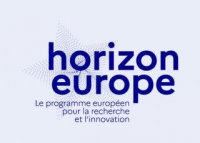Présentation
Background and scope
Land based agricultural production is the source of approximately 95% of human food nutrients (UN FAO). Intensive and often inappropriate practices in agriculture have however resulted in severe soil degradation, thereby reducing the capacity of soils to support food production and other important ecosystem services such as the regulation of water, nutrients, and carbon cycles. Soil degradation is further accelerated by the effects of climate change, with abiotic stresses such as heat, drought, salinity, and waterlogging, often in combination, having negative effects on the world’s crop production. The direct impact of a changed climate is also frequently accompanied by indirect impacts due to alterations in the composition and behaviour of weeds, insects, pathogens, and soil microbiome, alongside the impacts of increased amounts of human-generated pollutants.
Plants react to such stresses with what are often conflicting physiological and metabolic responses. These may prioritise one acclimatisation/adaptation strategy over the other, a blend of one or more responses, and/or through developing a completely new strategy, all of which can, in turn, impact final production including nutrient content.
When combined with an increasing human population, likely to increase net demand for food, there is a clear rationale to reinforce existing food and nutrient production systems and explore complementary routes to food production that are more efficient, resilient, sustainable and maintain or increase biodiversity.
This Pathfinder Challenge therefore aims to support projects that enhance adaptation pathways for the production of climate-resilient crops and develop alternative pathways to produce high value ingredients in plants by increasing nutrient profile of crops based on plant native and/or non-native ingredients.
Specific Objectives
Innovative ideas put forward under this Challenge must go beyond incremental changes to the state-of-the-art and result in novel production processes that must deliver energy- and resource-efficient, low emission foods that maintain or increase biodiversity and are integral to a healthy diet.
Funded projects are expected to develop breakthrough technologies that reach TRL4 (validation in laboratory environment) with viable plants at the end of the projects. The proposals should work on both the following objectives:
• Increasing plant growth, yields and resistance to stress through:
o Enhancing tolerance to stress combinations occurring due to different climate scenarios that include the simultaneous exposure of crops to different stresses e.g. heat combined with drought, salinity, flooding, high CO2 levels, as well as indirect effect of climate change via altered composition and behaviour of weeds, insects, pathogens and soil microbiome and possible impact of human-generated pollutants.
o Increasing water use efficiency and nutrient use efficiency compared to current crops in commercial use.
o Improving plant reproduction and seed filling processes under unfavourable conditions caused by combination of at least two stress factors.
o Investigating and enhancing plant and soil microbiome interactions.
• Substantially increasing the nutritional value (e.g. proteins, vitamins) in crops through plant native and non-native ingredients in crops.
Projects must also develop a complete methodology for assessing the increase of plant growth, yields, and climate resilience to single and multiple stresses, and/or assess changes to the nutritional value of crops, as appropriate. Proposals should include multi-omics approaches including genomics, transcriptomics, proteomics, metabolomics and phenomics. These approaches can be further underpinned by leveraging technologies such as, but not limited to nanoparticle technology, chemistry, and advanced artificial intelligence to develop and introduce novel defence and acclimation strategies, currently not present in crops to achieve greater tolerance to harsh environmental conditions and/or biomanufacturing of non-native ingredients, to enable the time required for that development to be significantly shortened. Proposals should also look to address the narrow genetic diversity of novel crops and are also expected to consider regulatory aspects and to build on the work carried out so far by the European Food and Safety Authority (EFSA), where appropriate.
Expected Outcomes and Impacts:
In support of Building the future with nature: Boosting Biotechnology and Biomanufacturing in the EU, the Mission Soil, the EU Green Deal, Farm to Fork strategy, the Nature Restoration Law, Fit for 55, and REPowerEU policy actions, the key overall goal of this Challenge is to support the production of sustainable and nutritious food from plants.
This Challenge aims to support the development of climate smart crops and the production of high value plant native and non-native ingredients in a cost-effective and environmentally friendly manner. In the medium to long-term this will:
• Improve the sustainability, efficiency, biodiversity and resilience of the European food supply chain.
• Secure long-term competitiveness of EU Food supply chain while decreasing EU dependency on imports of inputs for primary production, feed, and food.
The following principles will be used to select the portfolio of projects:
- Selected projects for the portfolio should have a synergy with one another in terms of a common component, for instance projects address similar stress factors for different crops or are leveraging a similar technology.
- A balanced representation of native and non-native ingredients.
- A balanced representation of conventional and New Genomic Techniques (NGTs).
- Diverse type of crops to ensure that the portfolio covers a broad spectrum, if possible, ensuring European geographical coverage where these crops are grown.
- Diverse stress factor combinations to ensure that a broad spectrum of stress factors is covered.
- Diversity in technological approaches to compare their efficiency.
All projects will participate in a work package dedicated to the development of monitoring and prediction methodologies for climate adaptation assessment and lifecycle-analysis.






